import molecularnodes as mn
import MDAnalysis as mda
from MDAnalysis.tests.datafiles import DCD, PSF, TPR, XTC
# create a canvas object
canvas = mn.Canvas()Canvas
The Canvas object can be used to configure different render settings, camera, frame objects and views to render images and animations. The snapshot and animation methods can be used to render images and animations respectively.
Setup Molecular Nodes
Add Trajectories
u1 = mda.Universe(PSF, DCD)
u2 = mda.Universe(TPR, XTC)
# add universes to Blender
t1 = mn.Trajectory(u1).add_style("cartoon")
t2 = mn.Trajectory(u2)Add Styles and Annotations to Trajectories
# styles
# trajectory 1
t1.add_style(style=mn.StyleBallAndStick(quality=4), selection="resid 184")
t1.add_style(
style=mn.StyleSpheres(subdivisions=4, geometry="Instance"),
selection="resid 1 129",
)
# trajectory 2
t2.add_style(style="ribbon", color=(0.162, 0.624, 0.196, 0.5))
t2.add_style(selection="resid 141", style="ball_and_stick")
# annotations
# trajectory 1
t1.annotations.add_com_distance(
selection1="resid 1", selection2="resid 129", text1="resid 1", text2="resid 129"
)
t1.annotations.add_atom_info(selection="name CA and resid 184", show_resid=True)
# trajectory 2
t2.annotations.add_atom_info(selection="name CA and resid 141", show_resid=True)<molecularnodes.annotations.manager.AtomInfo_interface at 0x15f051b50>Add Density component
from pathlib import Path
d1_path = Path("../../") / "tests/data/emd_24805.map.gz"
# load density file
d1 = mn.entities.density.io.load(
file_path=d1_path,
style="density_iso_surface",
overwrite=True,
)Frame Objects
The frame_object method can be used to frame entity objects. By default, the current camera viewpoint is used to frame objects. An optional viewpoint param can be used to set the viewpoint to one of [default, front, back, left, right, top, bottom].
# frame trajectory 1 from front and render
canvas.frame_object(t1, viewpoint="front")
canvas.snapshot()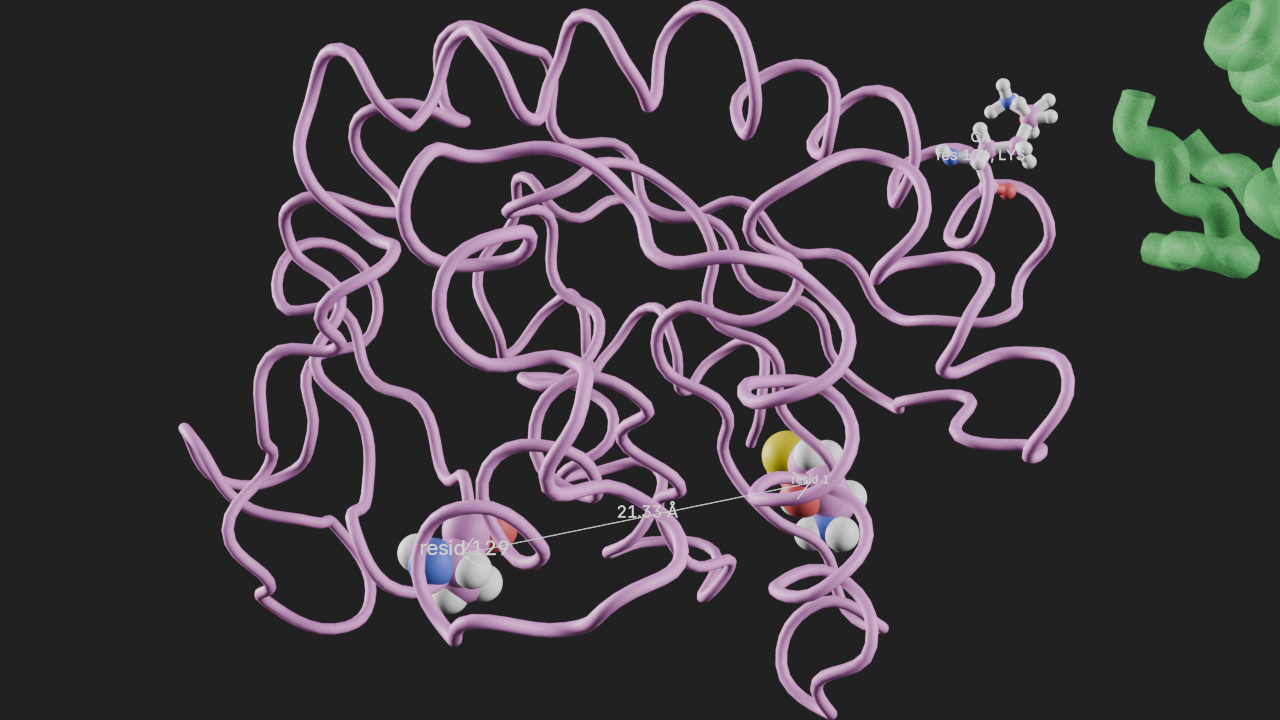
# frame trajectory 2 from front and render
canvas.frame_object(t2, viewpoint="front")
canvas.snapshot()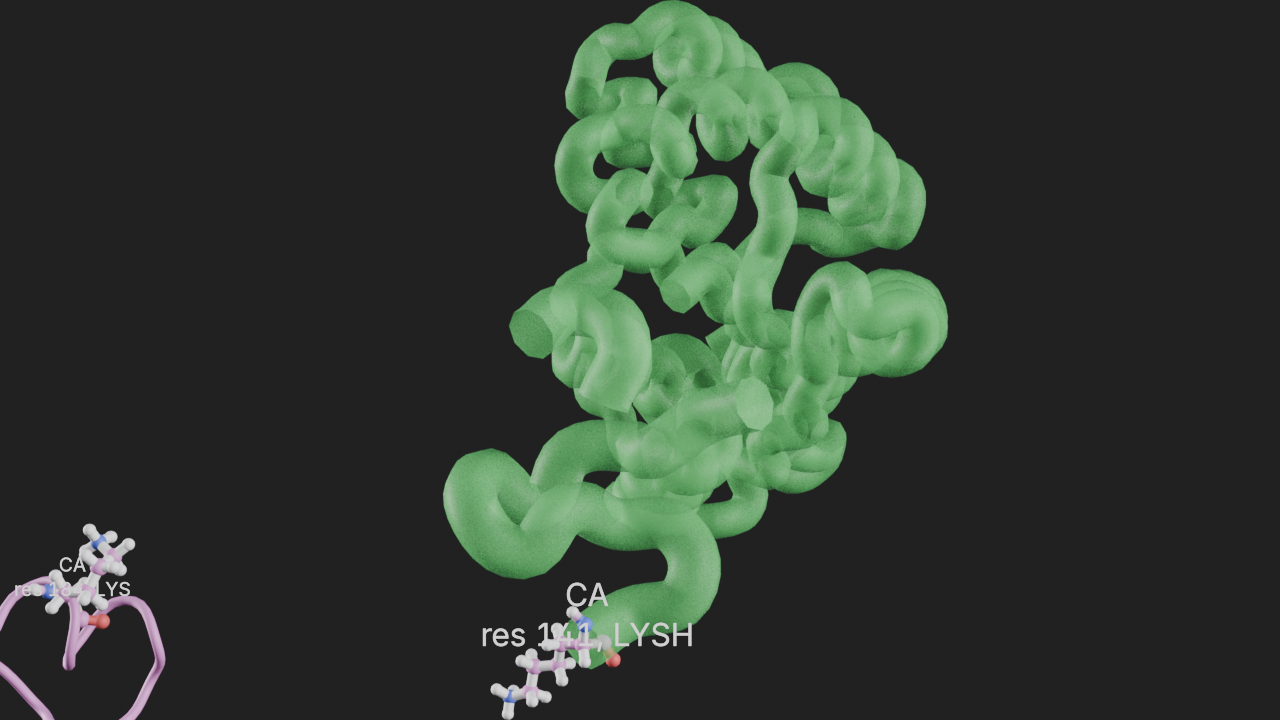
# frame density object from right and render
canvas.frame_object(d1, viewpoint="right")
canvas.snapshot()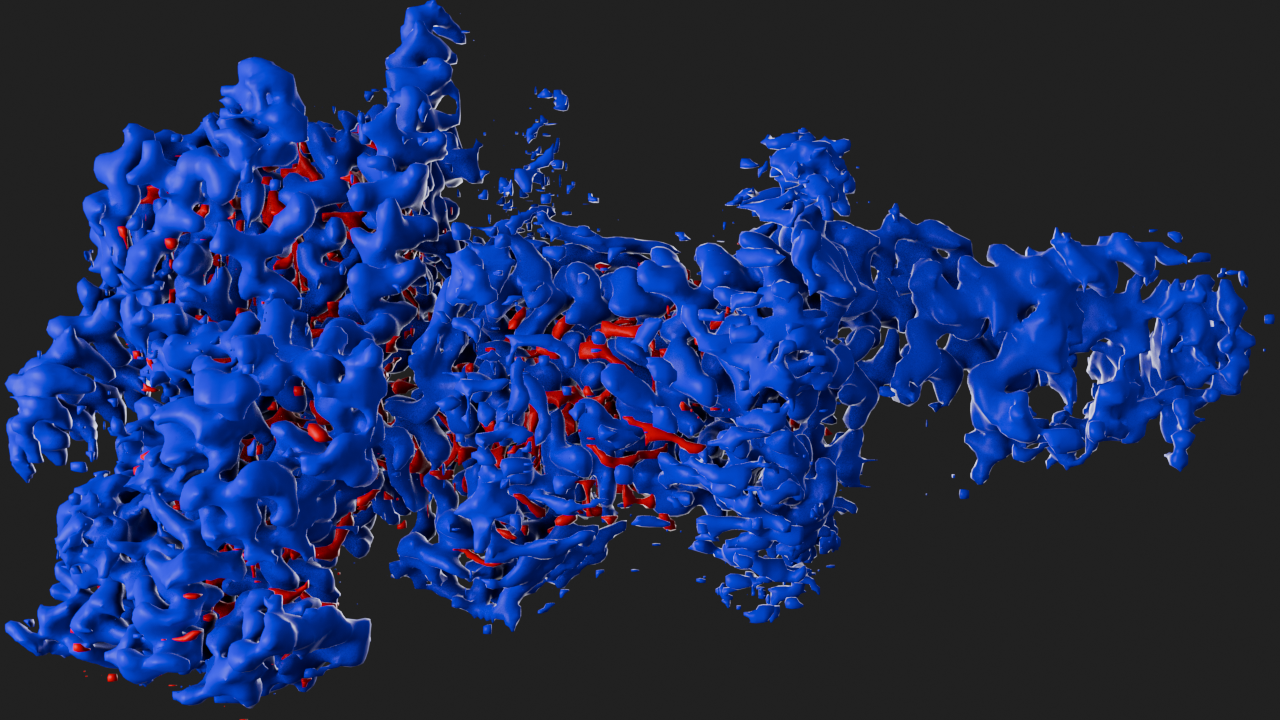
Frame Views
The frame_view method can be used to frame one or more views. Views can be specific selections within entities or across entities. Multiple views can be combined with a + sign before passing to the frame_view method. An optional viewpoint param can be passed to specify the viewpoint like before.
All entities have a get_view method that returns the entity object by default. The get_view method of trajectories can return views based on one or more selection strings or AtomGroups and also take the specific trajectory frame into consideration.
# frame resid 184 in trajectory 1 from the front
v184 = t1.get_view(selection="resid 184")
canvas.frame_view(v184, viewpoint="front")
canvas.snapshot()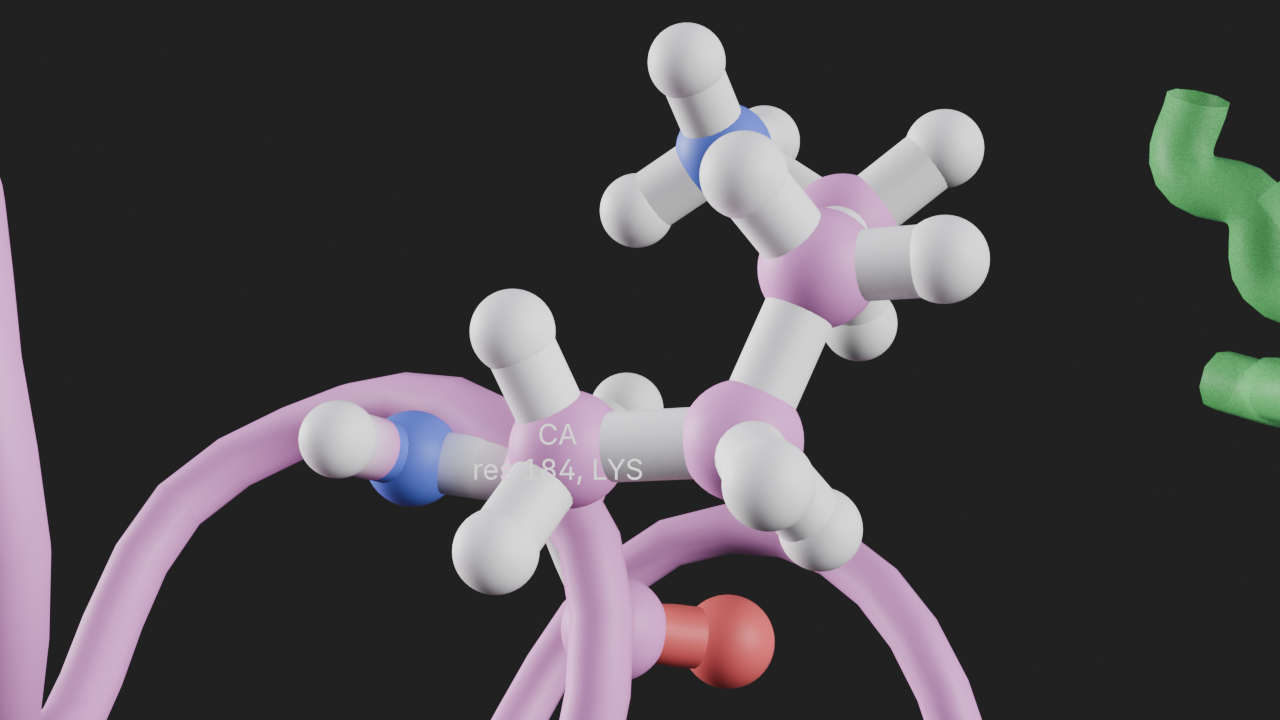
# frame resid 1 and 129 in trajectory 1 at frame 97 from the front
canvas.frame_view(t1.get_view("resid 1 129", frame=97), viewpoint="front")
canvas.snapshot()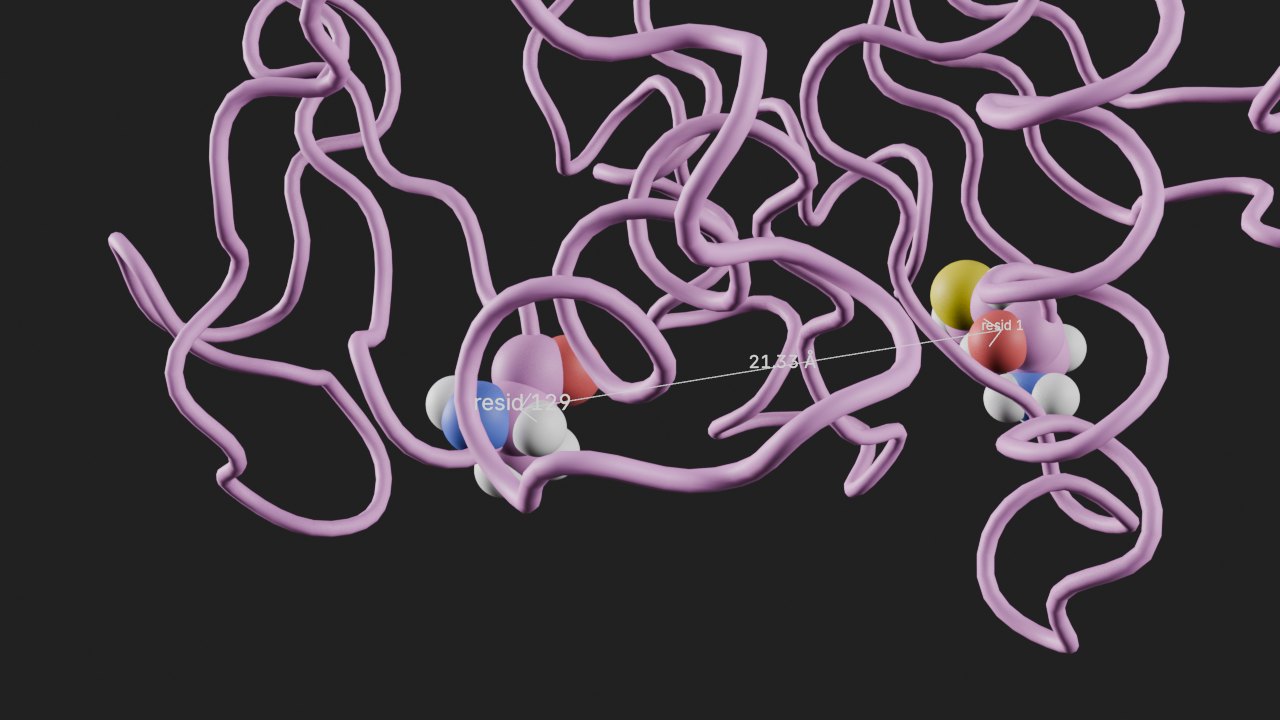
# frame resid 184 from trajectory 1 and resid 141 from trajectory 2
canvas.frame_view(
t1.get_view("resid 184") + t2.get_view("resid 141"), viewpoint="front"
)
canvas.snapshot()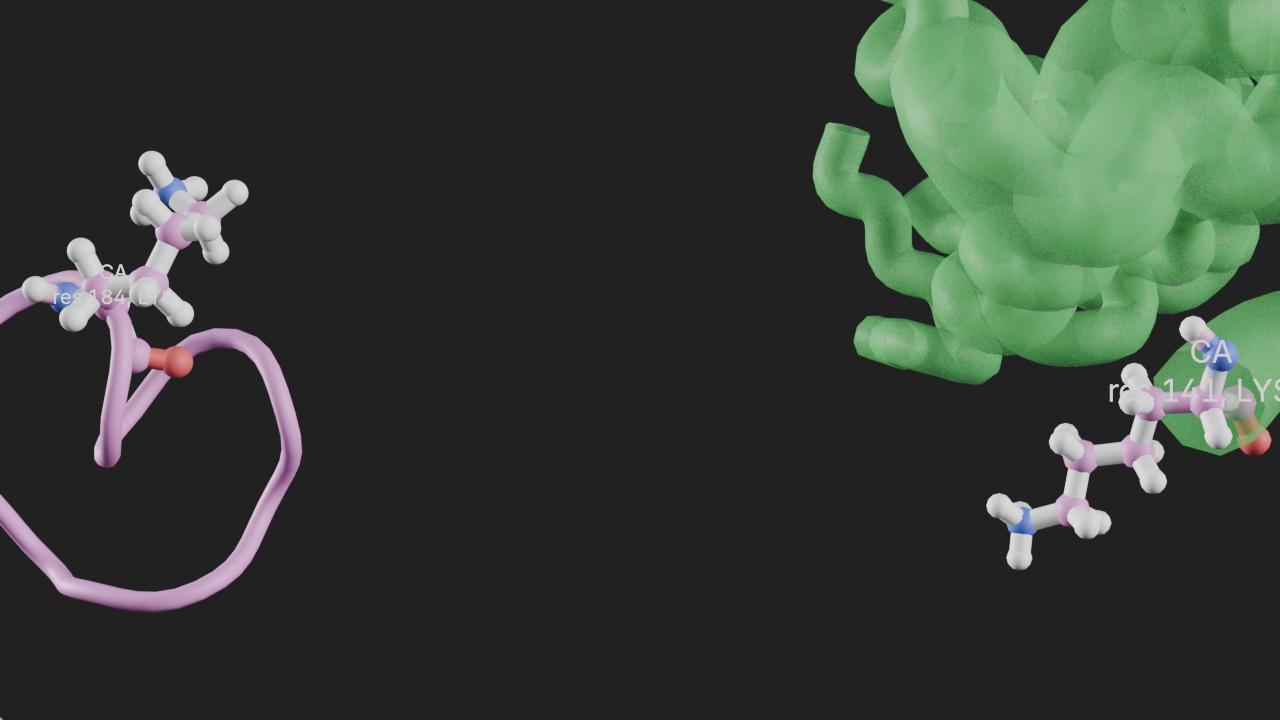
# frame trajectory 2 and density component from left
canvas.frame_view(t2.get_view() + d1.get_view(), viewpoint="left")
canvas.snapshot()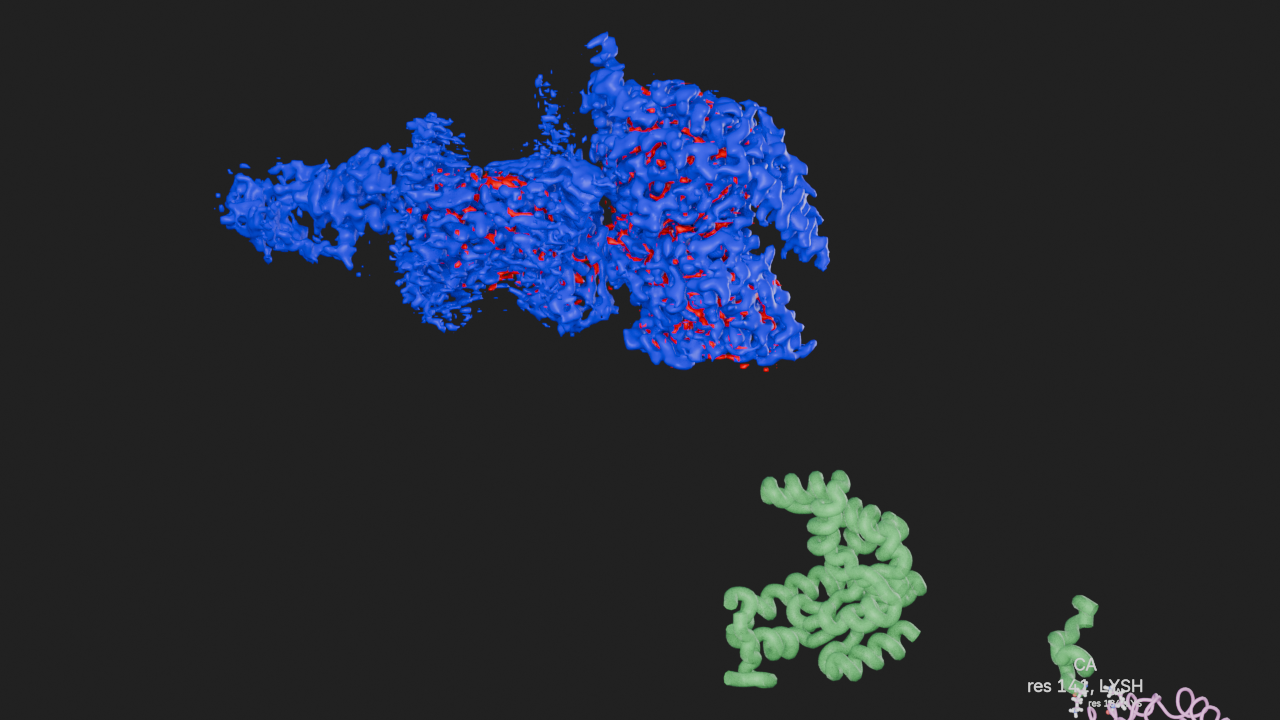
Camera Zoom in or out
Camera can be zoomed in our out using the camera lens settings of the Canvas camera object once framed.
# frame density object from front and render - default
canvas.frame_object(d1, viewpoint="front")
canvas.snapshot()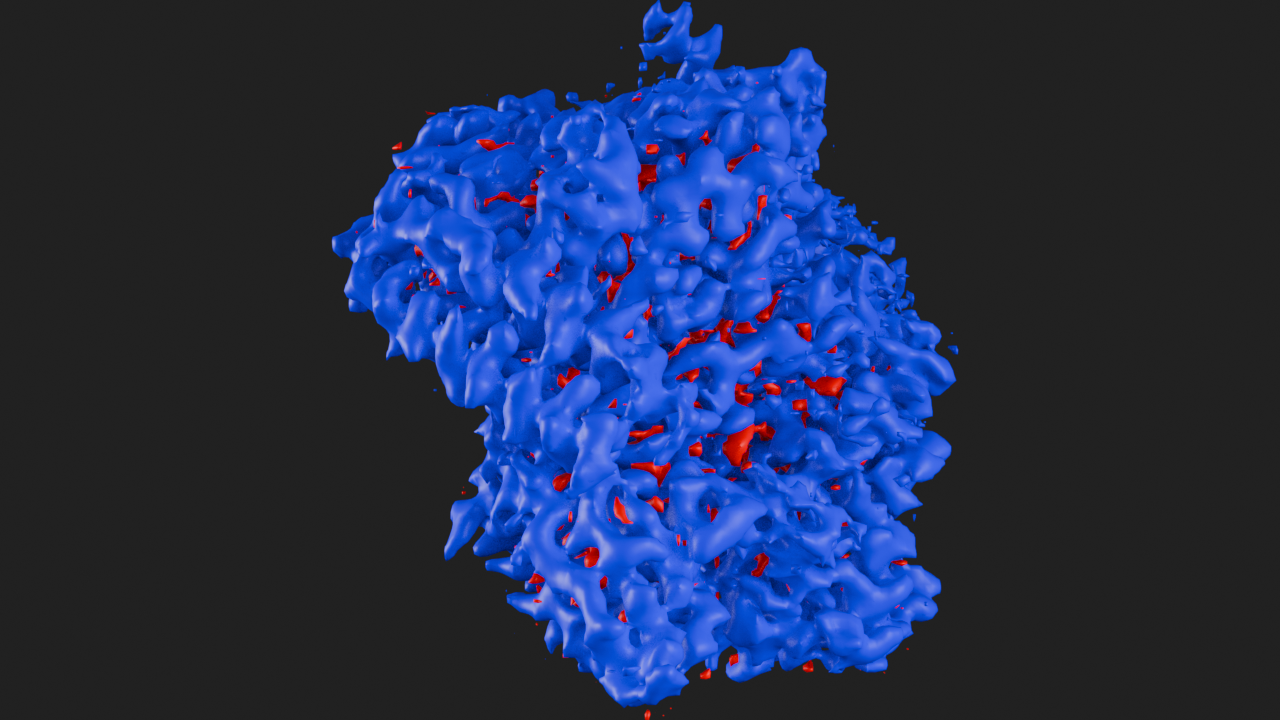
# zoom in
canvas.camera.lens = 150
canvas.snapshot()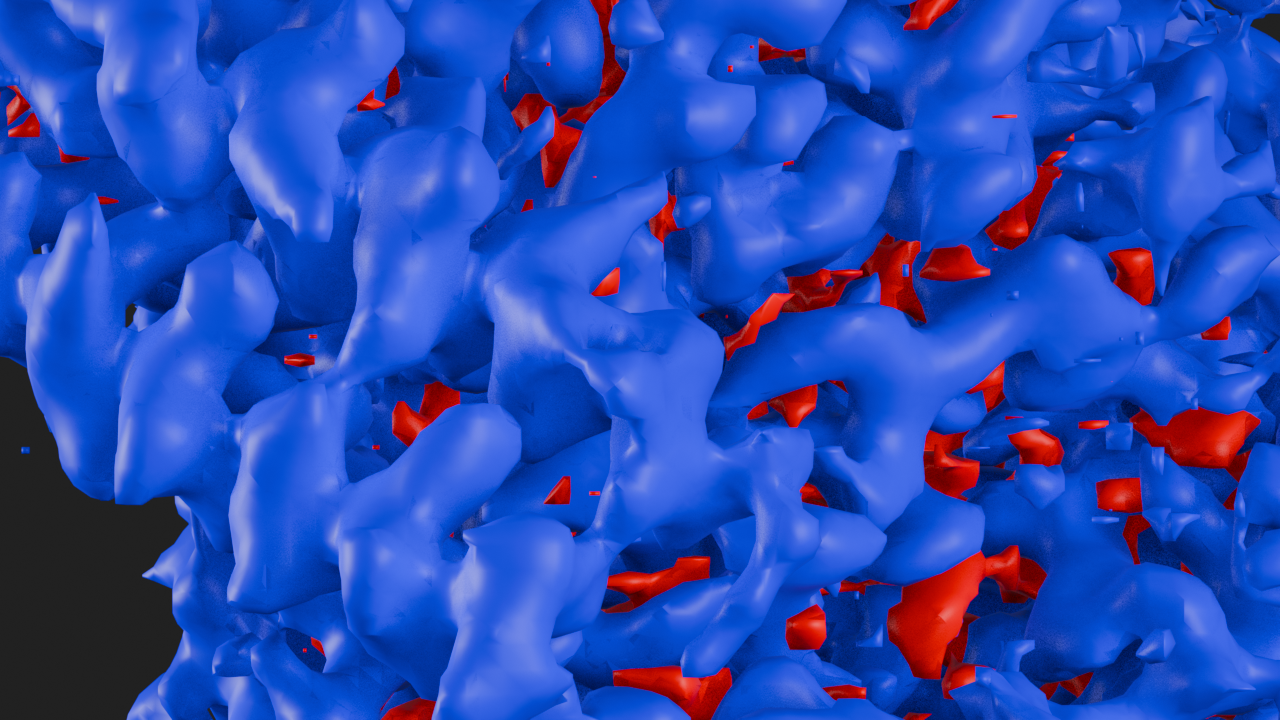
# zoom out
canvas.camera.lens = 35
canvas.snapshot()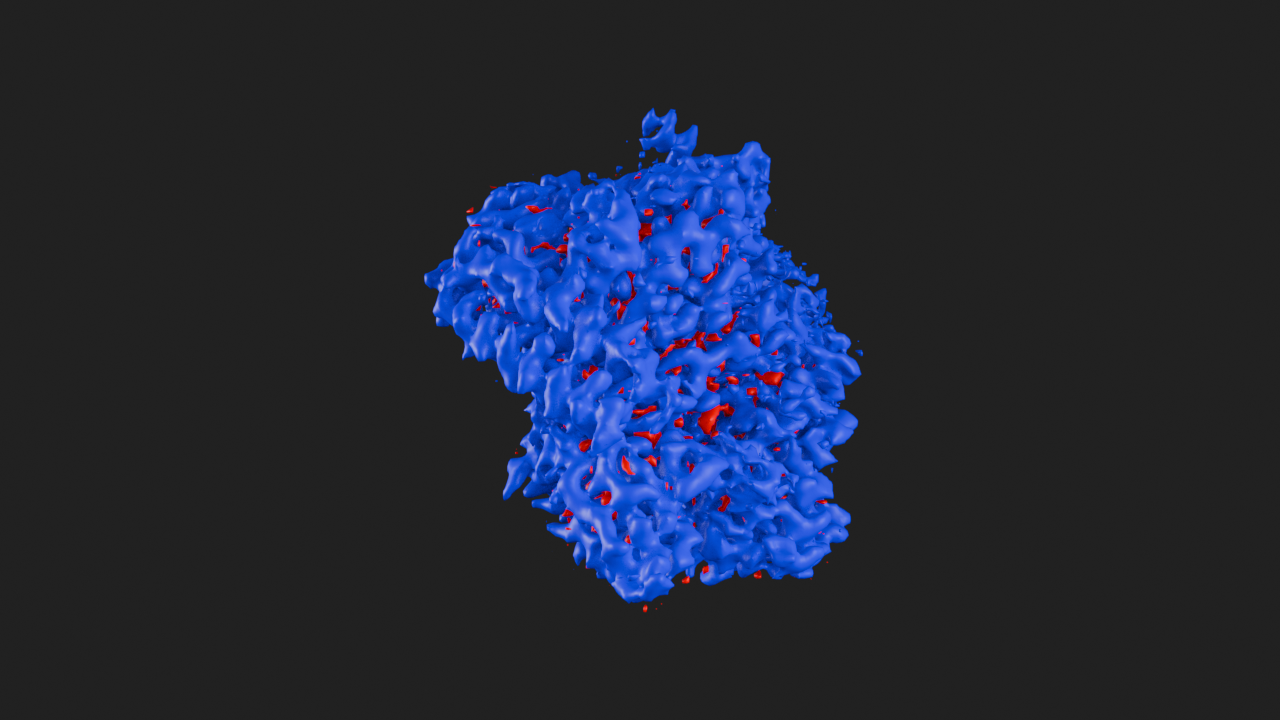
# reset camera lens to default (50mm)
canvas.camera.lens = 50Camera Rotation
Camera can be rotated to an arbitrary angle using the camera rotation method of the Canvas camera object before framing the object or view. Blender uses a default XYZ Euler for rotations along the X, Y and Z axes. The rotation method takes angles in degrees.
# print current rotation
canvas.camera.rotation(89.999995674289, -0.0, 0.0)# rotate 45 degrees to left from the front view
# frame density object - note that viewpoint is not specified
canvas.frame_view(d1, (90, 0, -45))
canvas.snapshot()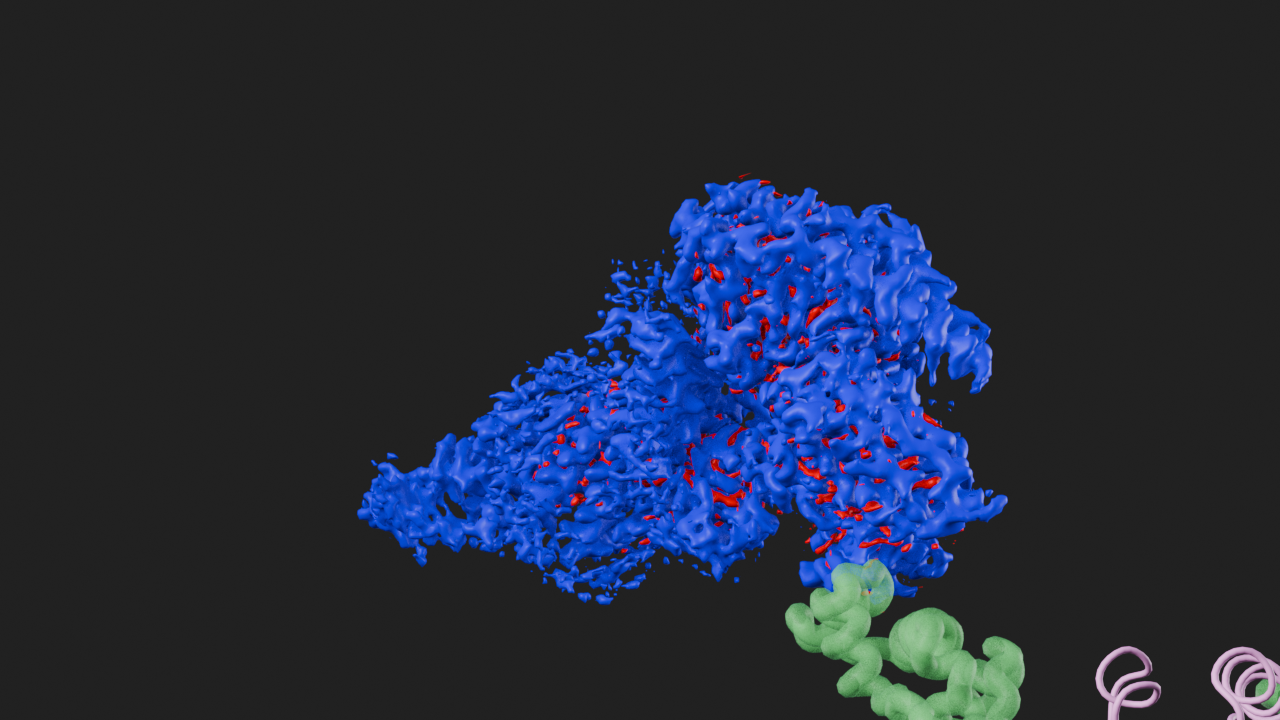
# frame density object and render
canvas.frame_view(d1, (90, 0, 45))
canvas.snapshot()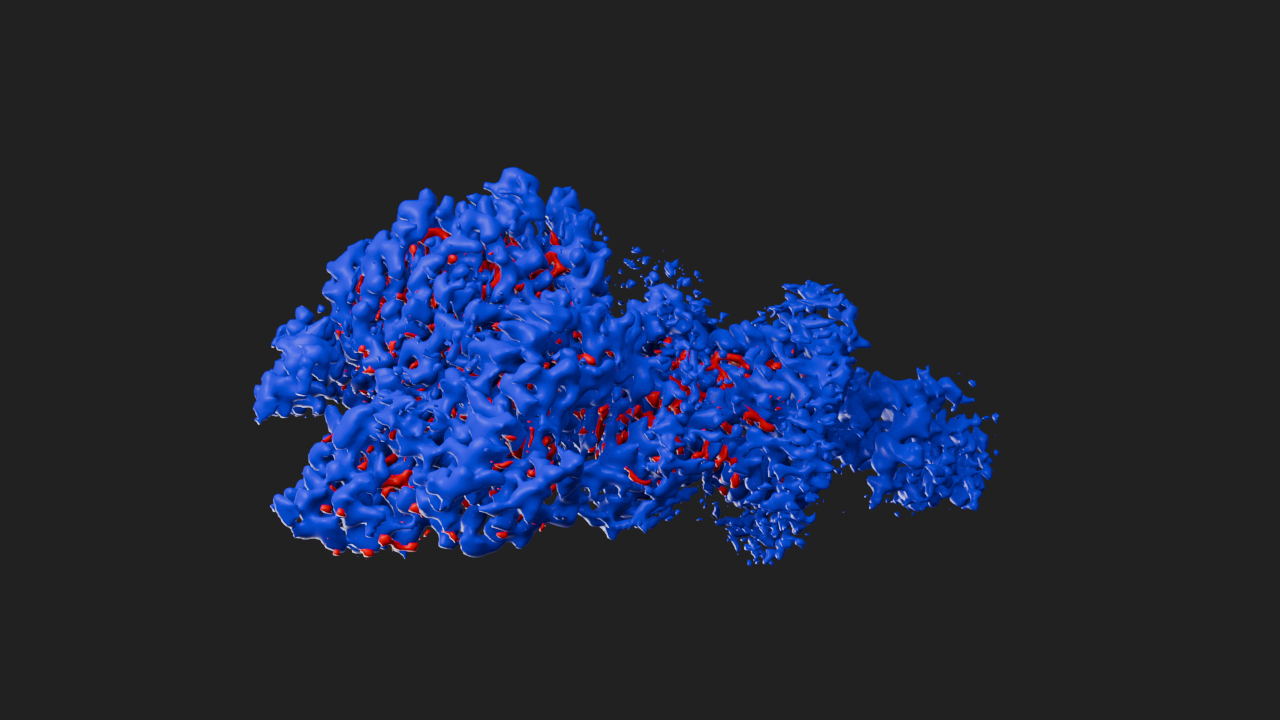
Animations
The animation method can be used to render animations. An optional frame_start and frame_end can be specified to limit animations to a custom range. The render_scale parameter can be used to scale the renders as a percentage of the render resolution.
# frame resid 1 and 129 in trajectory 1 at frame 97 from the front
canvas.frame_view(t1.get_view("resid 1 129", frame=97), viewpoint="front")
# add a universe info annotation to trajectory 1
t1.annotations.add_universe_info()<molecularnodes.annotations.manager.UniverseInfo_interface at 0x15e07b510># render animation of scene from frame 10 to 50 at 50% sccale
canvas.animation(frame_start=10, frame_end=50, render_scale=50)